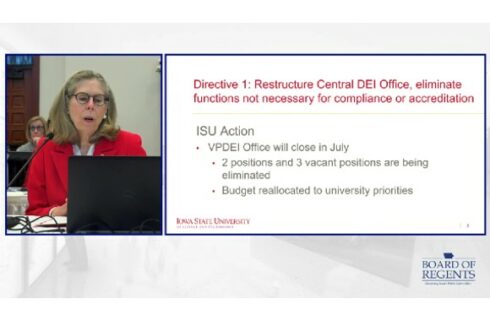
College students in Oregon won’t be getting free tuition in return for a small portion of their post-college earnings any time soon.
The state’s Higher Education Coordinating Commission rejected the “Pay It Forward” plan at a meeting last week, saying it should have a dedicated funding source from the Legislature, The Oregonian reported.
An analysis requested by the commission warned that the costs would significantly exceed estimates – $6.5 million to start and $20 million at its peak in six years – if tuition kept rising faster than inflation.
The plan was never as firm or expansive as some national media outlets made it sound, as The Oregonian noted a year ago.
The Legislature approved a bill last year directing the commission to study the feasibility of a Pay It Forward system and then, if it found the concept sound, propose a pilot program for lawmakers to vote on. It would only cover 1,000 students for each school year 2016-2019, and a financial aid expert told The Oregonian the state couldn’t compel other states or the IRS “t0 tell it how much individuals outside Oregon earn” for the purpose of calculating repayment.
The program’s designers told a state committee in June that a repayment rate of 3-5 percent of post-college income over 20 years could make the program self-sustaining, The Oregonian reported.
The commission asked an independent economics consulting firm, ECONorthwest, to evaluate the Pay It Forward model. In its report on the model released at last week’s meeting, the firm told the commission the model’s structure was “reasonable and useful” but listed some caveats.
If the program’s terms made it “less desirable at higher income levels, participation by science, technology, engineering, or math (STEM) majors or others with reason to expect higher future incomes, might be lower, reducing the expected average income for those who do participate,” the report said. Excluding even a “small number” of those high earners can lower the average income of the rest of the group “significantly.”
And the model’s “assumption of no real increase in tuition is difficult to believe in light of historic tuition increases,” the firm said: “Even a small rate of increase in real (inflation-adjusted) tuition rates leads to large reductions in the financial feasibility of the program,” and “real earnings” are no longer increasing “steadily at one to two percent per year” as they were until 15 years ago.
Ben Cannon, executive director of the commission, left open a sliver of hope for Pay It Forward’s implementation at last week’s meeting, The Oregonian said. The commission will lay out how a trial version of the program would work in a report to the Legislature next month, and recommend Oregon adopt it “if it somehow finds the necessary millions.”
The commission prefers a more conventional financial aid path, deciding at last week’s meeting to recommend to Democratic Gov. John Kitzhaber that 26,000 students get an average grant of more than $4,000 for each of their first two years in school. That would be 60 percent “above state financial aid for 2015-17 compared with the current two-year budget” if Kitzhaber agrees, The Oregonian said.
Greg Piper is an assistant editor of The College Fix. (@GregPiper)
Like The College Fix on Facebook / Follow us on Twitter
IMAGE: Michael Li/Flickr





Please join the conversation about our stories on Facebook, Twitter, Instagram, Reddit, MeWe, Rumble, Gab, Minds and Gettr.